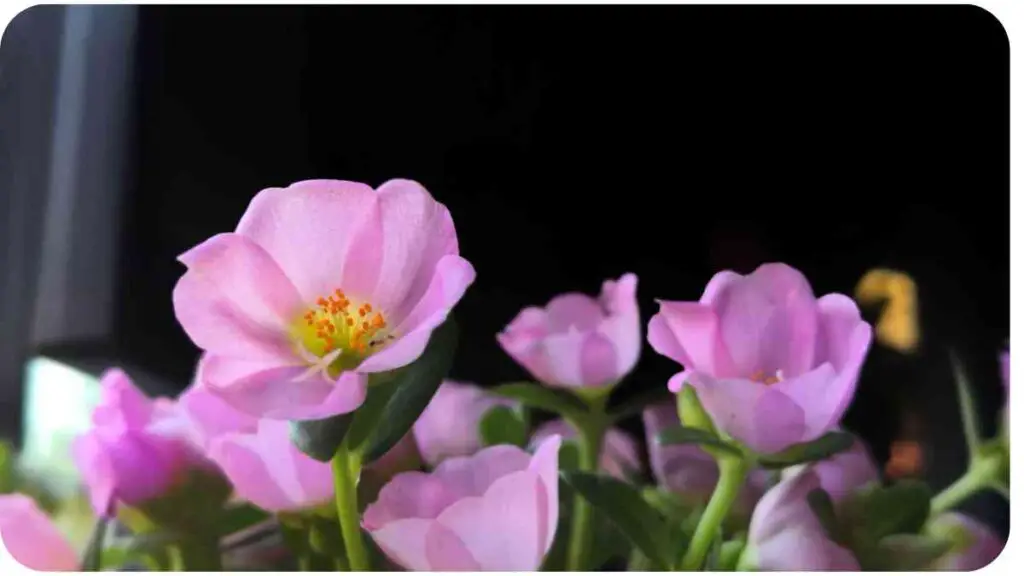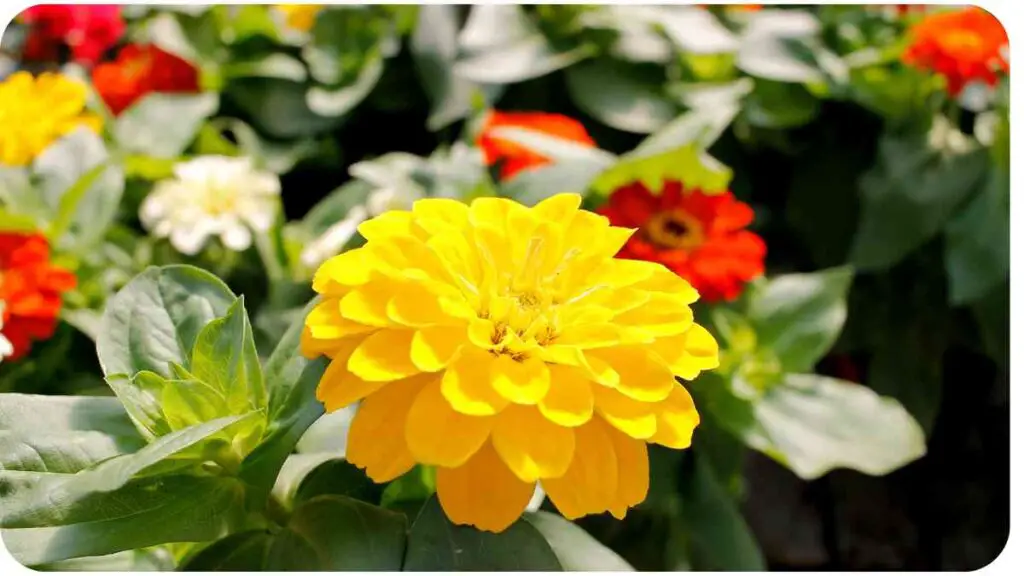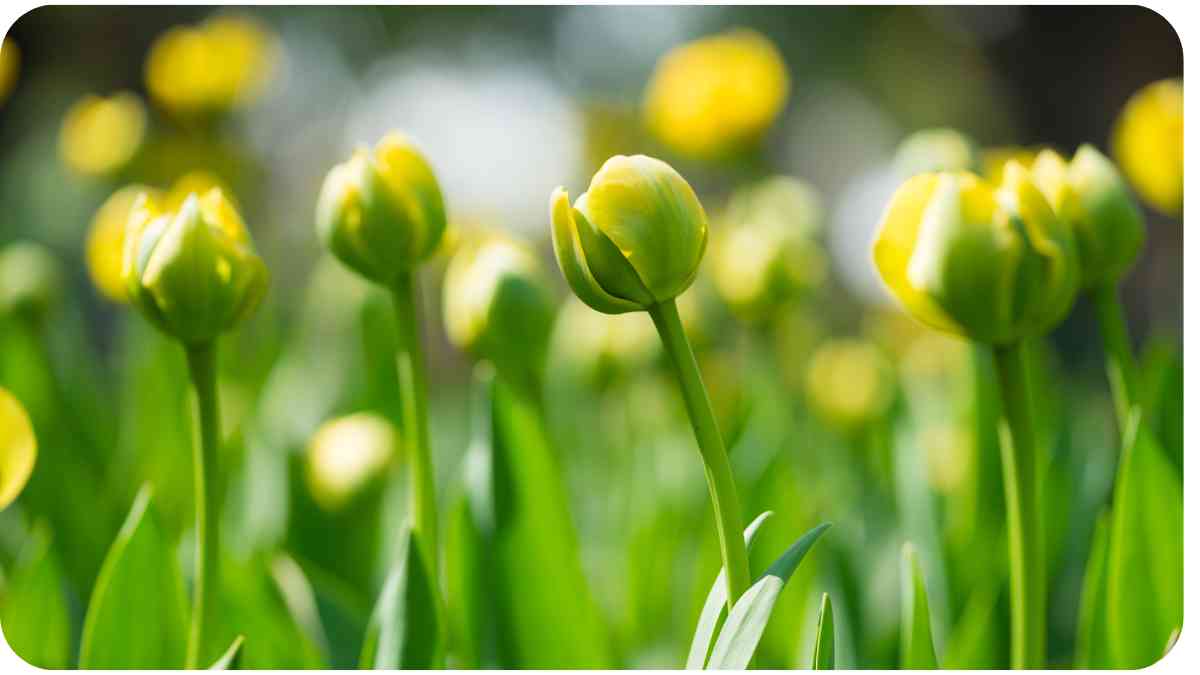Ever found yourself staring at a garden, eagerly waiting for those beautiful flower buds to burst open, only to be met with disappointment as they remain tightly closed? It’s a common issue for gardeners and plant enthusiasts alike. When flower buds don’t open, it can be a sign of various underlying problems that could affect the plant’s health and your garden’s aesthetic appeal.
| Key Takeaway |
|---|
| Identifying why flower buds don’t open involves assessing environmental conditions, nutrient levels, pests, and genetic factors. |
| Ensure plants receive adequate light, maintain proper temperature, and follow suitable watering practices for optimal blooming. |
| Regularly test soil for nutrient deficiencies and adjust with appropriate fertilizers to support healthy flower bud development. |
| Monitor plants for pests and diseases, and use effective control methods to prevent damage to flower buds. |
| Choose plant varieties suited to your local climate and soil conditions to improve flowering success and reduce issues. |
Importance of Addressing This Issue
Addressing the issue of unopened flower buds is crucial for several reasons. For one, it ensures that your plants are healthy and thriving. Additionally, understanding and solving the problem can help you achieve a more vibrant and beautiful garden, enhance your gardening skills, and prevent future issues. So, let’s dive into the potential causes and solutions to get those buds blooming!
Flower buds can fail to bloom due to dormancy issues or environmental stress. If you’re facing similar issues with your plants, it’s crucial to explore why tulips aren’t blooming, as dormancy can affect various flower species.
Common Causes of Flower Buds Not Opening

Understanding why flower buds don’t open requires a closer look at various factors. These can range from environmental conditions to nutrient imbalances, pests, and even genetic issues. Let’s explore each of these potential causes in detail.
Environmental Factors
Light Requirements
Light plays a pivotal role in the flowering process. Most flowers need a specific amount of light to trigger blooming. Insufficient light can cause buds to remain closed or even drop off. Ensure that your plants receive the appropriate amount of light for their species.
Temperature and Weather Conditions
Extreme temperatures whether too hot or too cold can also affect flower bud development. Many plants have specific temperature ranges that they thrive in, and deviations from these ranges can hinder blooming.
Sometimes, despite proper care, plants may wilt or show signs of poor health. To understand why your plant buds aren’t thriving, it’s worth reading about wilting plants, which can often be linked to deeper issues in the soil or plant structure.
Watering Practices
Both overwatering and underwatering can stress plants and prevent flower buds from opening. It’s essential to follow proper watering practices based on the plant species and soil conditions.
Soil Conditions
Healthy soil is fundamental for healthy plants. Poor soil conditions, such as compacted soil or incorrect pH levels, can affect nutrient uptake and ultimately impact flower bud development.
Table: Optimal Conditions for Different Types of Flowers
| Flower Type | Light Requirement | Temperature Range | Watering Needs | Soil Type |
|---|---|---|---|---|
| Roses | Full sun | 60-70°F (15-21°C) | Regular | Well-draining loam |
| Orchids | Indirect light | 65-75°F (18-24°C) | Light | Peat-based mix |
| Tulips | Full sun | 50-60°F (10-15°C) | Moderate | Well-draining |
| Sunflowers | Full sun | 70-85°F (21-29°C) | Regular | Loamy |
Nutrient Deficiencies
Essential Nutrients for Flowering
Plants require various nutrients to support healthy growth and blooming. Key nutrients include nitrogen, phosphorus, and potassium. A deficiency in any of these can affect flower bud development.
Symptoms of Nutrient Deficiencies
Nutrient deficiencies can manifest as yellowing leaves, poor growth, and unopened flower buds. Identifying these symptoms early can help you address the issue before it impacts your garden significantly.
Table: Common Nutrient Deficiencies and Their Effects
| Nutrient | Deficiency Symptoms | Effect on Flower Buds |
|---|---|---|
| Nitrogen | Yellowing leaves, stunted growth | Reduced blooming |
| Phosphorus | Poor root development, weak stems | Buds may not open |
| Potassium | Browning leaf edges, weak plants | Poor bud formation |
| Calcium | Leaf curling, tip burn | Misshapen or dropped buds |
Pest and Disease Issues
Common Pests Affecting Flower Buds
Pests such as aphids, spider mites, and caterpillars can damage flower buds, causing them to remain closed or drop prematurely. Regular monitoring and control measures are essential to keep pests at bay.
Buds failing to open can be connected to overall plant health, including leaf discoloration. Understanding why leaves turn yellow can offer important clues to underlying problems that may also affect bud development.
Diseases That Impact Bud Opening
Diseases like powdery mildew and botrytis can also prevent flower buds from opening. These diseases often thrive in specific conditions, such as high humidity or poor air circulation.
Table: Pest and Disease Symptoms
| Issue | Symptoms | Impact on Flower Buds |
|---|---|---|
| Aphids | Distorted leaves, sticky residue | Buds may not open |
| Spider Mites | Webbing on plants, speckled leaves | Stunted bud development |
| Powdery Mildew | White fungal coating on leaves | Poor bud opening |
| Botrytis | Gray mold on buds and flowers | Bud rot and drop |
Genetic Factors
Plant Variety and Hybrid Issues
Some plants are genetically predisposed to specific flowering issues. Hybrid varieties, in particular, may face unique challenges that affect bud opening.
Flowering Cycle and Genetics
The flowering cycle can vary widely between species and varieties. Some plants may have natural cycles that result in delayed blooming, which might be mistaken for a problem.
Table: Genetic Factors Affecting Flower Buds
| Factor | Description | Effect on Bud Opening |
|---|---|---|
| Hybrid Varieties | Cross-breeds with specific traits | Variable blooming patterns |
| Flowering Cycle | Natural cycle of flowering | Delayed or irregular bloom |
How to Diagnose the Problem

Identifying the cause of unopened flower buds involves careful observation and sometimes testing. Here’s how you can diagnose the issue effectively.
Observing Symptoms
Look for visual signs on the plant, such as discolored leaves, malformed buds, or unusual growth patterns. These clues can help pinpoint the problem.
Stunted growth in plants, especially in raised beds, can impact flower bud formation and opening. If you’re facing similar challenges, explore how stunted growth issues in raised beds can delay blooming and affect plant health overall.
Soil Testing
Testing your soil can reveal nutrient imbalances or pH issues. Many garden centers offer soil testing services, or you can purchase a DIY kit.
Leaf and Stem Inspection
Check the leaves and stems for signs of pests or diseases. The condition of these parts can often give you insights into what might be affecting the flower buds.
Table: Diagnostic Checklist for Flower Bud Problems
| Diagnostic Step | What to Check | What It Reveals |
|---|---|---|
| Visual Inspection | Leaves, stems, buds | Pests, diseases, general health |
| Soil Test | Nutrient levels, pH | Nutrient deficiencies, soil issues |
| Plant History | Recent changes or stress factors | Possible environmental impacts |
Solutions and Preventive Measures
Once you’ve identified the cause, you can implement solutions and preventive measures to ensure your flower buds open beautifully.
Adjusting Environmental Conditions
Make necessary adjustments to light, temperature, and watering practices based on the needs of your plants. Creating the ideal environment can help encourage blooming.
Over-pruning can disrupt a plant’s ability to develop healthy buds and flowers. To recover from over-pruning and get your shrubs blooming again, check out tips on recovering from over-pruning, which can make a big difference in bud formation.
Correcting Nutrient Imbalances
Apply the appropriate fertilizers to correct nutrient deficiencies. Follow the recommendations for dosage and application to support healthy growth and flowering.
Managing Pests and Diseases
Use appropriate pest control methods and treatments for diseases. Regular monitoring and early intervention can prevent more severe issues.
Choosing the Right Plant Varieties
Select plant varieties that are well-suited to your local climate and soil conditions. This can reduce the likelihood of problems and improve flowering success.
Table: Solutions for Common Flower Bud Issues
| Issue | Solution | Prevention Tips |
|---|---|---|
| Poor Light Conditions | Adjust light exposure or use grow lights | Ensure proper light levels |
| Nutrient Deficiencies | Apply balanced fertilizers | Regularly test soil and adjust |
| Pest Infestation | Use insecticides or organic remedies | Regular pest checks |
| Soil Problems | Improve soil quality and drainage | Use appropriate soil amendments |
Conclusion
Recap of Key Points
Understanding why flower buds don’t open involves considering various factors like environmental conditions, nutrient levels, pests, and genetics. By diagnosing the problem and implementing targeted solutions, you can help your plants bloom beautifully.
Final Tips for Successful Flowering
Remember to regularly monitor your plants, maintain optimal growing conditions, and address issues promptly. With
Further Reading
Why Flower Buds Form on My Peonies Don’t Open?
Discover common reasons why peony flower buds might not open and how to address these issues to ensure your peonies bloom beautifully.
Mazus Reptans Flower Problems
Explore common flowering problems with Mazus Reptans and tips for improving bloom quality and plant health.
Why Your Flowering Shrubs Aren’t Blooming
Learn about potential causes for non-blooming flowering shrubs and effective strategies to promote healthy flowering.
FAQs
Why are my flower buds not opening?
Flower buds may not open due to various factors, including inadequate light, extreme temperatures, or nutrient deficiencies. It’s essential to assess and adjust environmental conditions, watering practices, and soil quality.
How can I improve the blooming of my peonies?
Peonies may struggle to bloom due to improper planting depth, insufficient sunlight, or poor soil conditions. Ensure that peonies are planted at the right depth, receive adequate sunlight, and have well-draining soil.
What are some common pests that affect flower buds?
Common pests that can impact flower buds include aphids, spider mites, and caterpillars. These pests can damage buds and inhibit their development. Regular pest control and monitoring can help manage these issues.
How often should I water my flowering plants?
Watering frequency depends on the plant species and soil conditions. Generally, plants should be watered when the top inch of soil is dry. Overwatering or underwatering can both lead to problems with bud development.
Can soil pH affect flower bud opening?
Yes, soil pH can significantly impact flower bud opening. Most plants prefer slightly acidic to neutral soil. Testing and adjusting soil pH can help ensure optimal conditions for blooming.

Hi! My name is Hellen James, and I’m a landscape designer in Los Angeles. I’ve been working with homeowners and businesses to help them improve the look of their properties for over 10 years.

